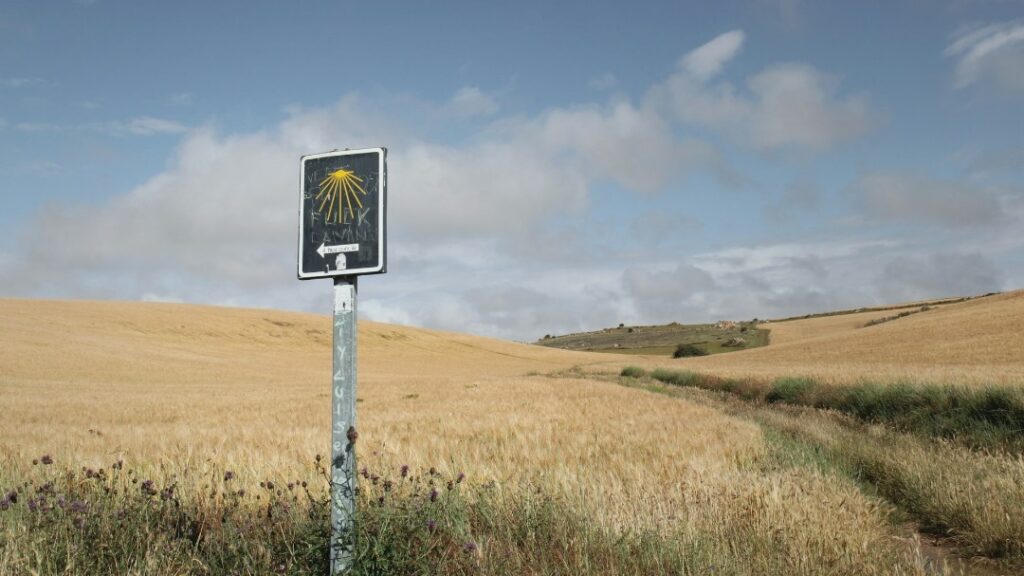The Way of St. James has been widely known as the Camino de Santiago de Compostela, a historic pilgrimage route and one of the most important worldwide. It has been traveled by millions of pilgrims, tourists, and even nonreligious people over the centuries.
It’s an iconic trail for pilgrims and an opportunity to wind through picturesque landscapes, medieval towns, and European cities.
Whether you’re looking for spiritual enlightenment, adventure, or simply a unique travel experience, the Camino de Santiago de Compostela can offer it all. In this quick guide, we’ll explore the essentials of walking this remarkable path.
Choosing and Walking the Path
The Camino de Compostela may be a challenging journey, depending on where you decide to start it, it can demand a lot from you but it’s not just a physical journey; it’s a transformative experience.
As you walk, take time to reflect, connect with nature, and appreciate the good mood of other pilgrims. Each step brings you closer to the heart of this ancient pilgrimage, where history, spirituality, and personal growth intersect.
But, where are you starting? There are several different starting points, at least 9 different routes and each year millions of pilgrims choose between them.
Here is the list:
- Camino Portugues
- Camino Frances
- Camino del Norte
- Camino Portugues Coastal
- Camino Ingles
- Camino Primitivo
- Camino Finisterre
- Le Puy Camino
- Via de la Plata
But we will focus on the shortest routes, that way you can still enjoy the experience without a huge toll on your body. It’s also a good entry point to check out if it’s for you or not.
The Shortest and Easiest Routes
The shortest routes are Camino Finisterre, which starts from Fisterra, and Camino Ingles which starts from Ferrol.
Nowadays, many people like to start the Camino de Santiago from the town of Sarria, which is the final stage of the Camino Frances and offers picturesque landscapes and charming villages. Walk the last 100 kilometers, collect your stamps, and reach Santiago with ease.
Last Stage on the Camino Portugues
From Tui to Santiago, the Camino Portugues provides a delightful journey along the Portuguese and Spanish coast. You’ll be able to enjoy cities like Vigo, with stunning views of the coast and architecture as well as other towns like Pontevedra.
Enjoy comfortable accommodations and scenic views as you approach your destination.
Comforts Along the Route
Ditch the Backpack
Leave the heavy backpack behind! Opt for luggage transfer services, allowing you to walk unencumbered. Your bags will magically appear at your next destination.
Many companies are offering those services specific for the Camino de Santiago but it’s more suitable if you’re doing longer routes.
Hotel Stays
While on most routes you’ll have super affordable or free albergues for pilgrims to stay at, you can level up the experience by staying in a cozy hotel, there are a ton of hotels along the way in most routes.
Most hotels have this local, almost rural vibe to it and also, offer a good traditional and hearty meal. Rest well each night, knowing a comfortable bed awaits. No need to rough it!
Organized Trips
The popularity of the Camino de Santiago is such that nowadays you can find whole organized trips, packages that offer a ton of different amenities, and even the option of transportation if you get tired or can’t complete the route by foot for any reason.
Book a fully organized walking trip with a specialized travel agency. They’ll handle logistics, and accommodations, and even provide a guide if you prefer.
Description: Learn all you need to know about doing the Camino de Santiago hassle-free, whether you walk for religious reasons or to explore Europe.
Image Source: Unsplash
Alt: A Camino de Santiago sign in a route in Spain
——
A Quick Guide to Walking the Camino de Santiago
The Way of St. James has been widely known as the Camino de Santiago de Compostela, a historic pilgrimage route and one of the most important worldwide. It has been traveled by millions of pilgrims, tourists, and even nonreligious people over the centuries.
It’s an iconic trail for pilgrims and an opportunity to wind through picturesque landscapes, medieval towns, and European cities.
Whether you’re looking for spiritual enlightenment, adventure, or simply a unique travel experience, the Camino de Santiago de Compostela can offer it all. In this quick guide, we’ll explore the essentials of walking this remarkable path.
Choosing and Walking the Path
The Camino de Compostela may be a challenging journey, depending on where you decide to start it, it can demand a lot from you but it’s not just a physical journey; it’s a transformative experience.
As you walk, take time to reflect, connect with nature, and appreciate the good mood of other pilgrims. Each step brings you closer to the heart of this ancient pilgrimage, where history, spirituality, and personal growth intersect.
But, where are you starting? There are several different starting points, at least 9 different routes and each year millions of pilgrims choose between them.
Here is the list:
- Camino Portugues
- Camino Frances
- Camino del Norte
- Camino Portugues Coastal
- Camino Ingles
- Camino Primitivo
- Camino Finisterre
- Le Puy Camino
- Via de la Plata
But we will focus on the shortest routes, that way you can still enjoy the experience without a huge toll on your body. It’s also a good entry point to check out if it’s for you or not.
The Shortest and Easiest Routes
The shortest routes are Camino Finisterre, which starts from Fisterra, and Camino Ingles which starts from Ferrol.
Nowadays, many people like to start the Camino de Santiago from the town of Sarria, which is the final stage of the Camino Frances and offers picturesque landscapes and charming villages. Walk the last 100 kilometers, collect your stamps, and reach Santiago with ease.
Last Stage on the Camino Portugues
From Tui to Santiago, the Camino Portugues provides a delightful journey along the Portuguese and Spanish coast. You’ll be able to enjoy cities like Vigo, with stunning views of the coast and architecture as well as other towns like Pontevedra.
Enjoy comfortable accommodations and scenic views as you approach your destination.
Comforts Along the Route
Ditch the Backpack
Leave the heavy backpack behind! Opt for luggage transfer services, allowing you to walk unencumbered. Your bags will magically appear at your next destination.
Many companies are offering those services specific for the Camino de Santiago but it’s more suitable if you’re doing longer routes.
Hotel Stays
While on most routes you’ll have super affordable or free albergues for pilgrims to stay at, you can level up the experience by staying in a cozy hotel, there are a ton of hotels along the way in most routes.
Most hotels have this local, almost rural vibe to it and also, offer a good traditional and hearty meal. Rest well each night, knowing a comfortable bed awaits. No need to rough it!
Organized Trips
The popularity of the Camino de Santiago is such that nowadays you can find whole organized trips, packages that offer a ton of different amenities, and even the option of transportation if you get tired or can’t complete the route by foot for any reason.
Book a fully organized walking trip with a specialized travel agency. They’ll handle logistics, and accommodations, and even provide a guide if you prefer.




